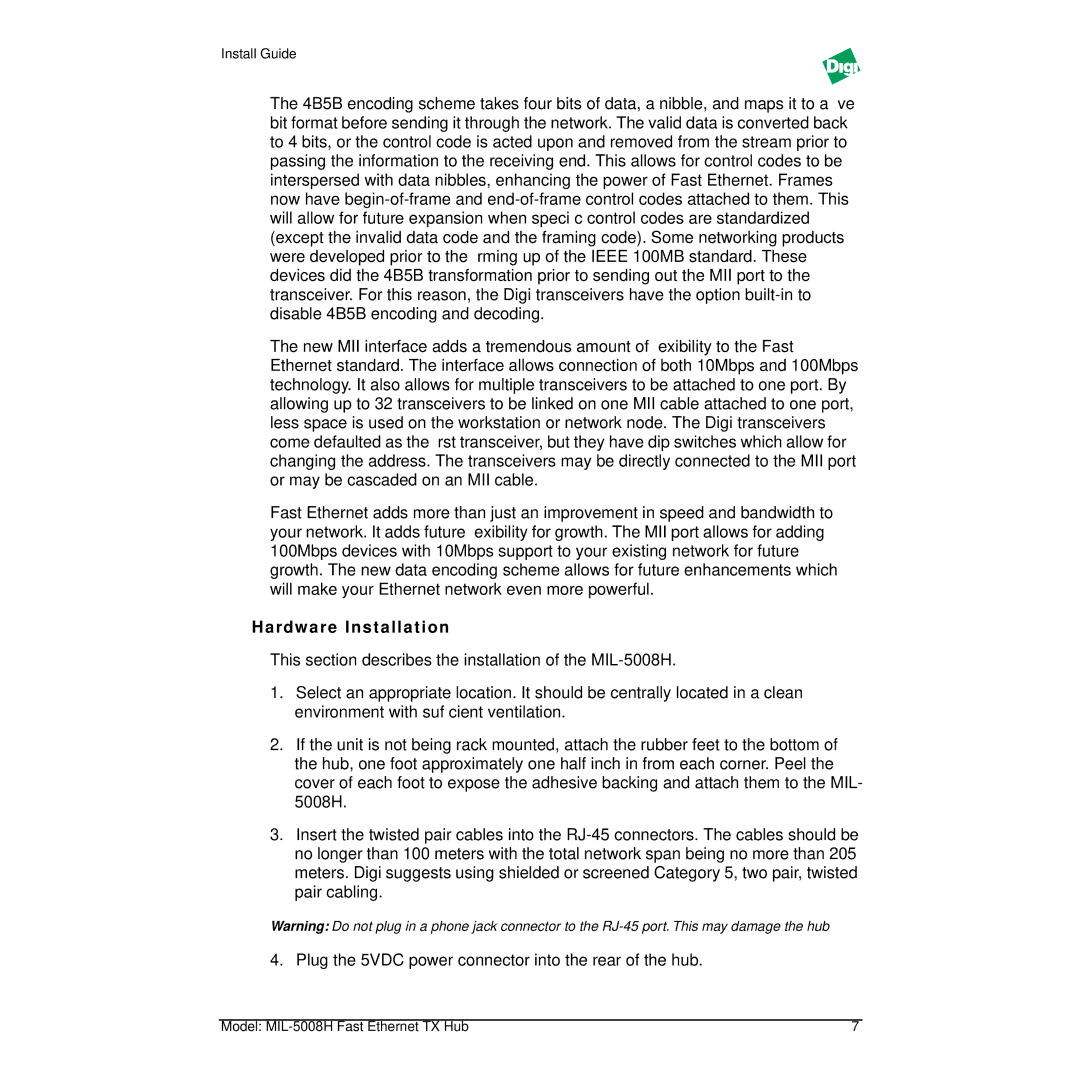Install Guide
The 4B5B encoding scheme takes four bits of data, a nibble, and maps it to a five bit format before sending it through the network. The valid data is converted back to 4 bits, or the control code is acted upon and removed from the stream prior to passing the information to the receiving end. This allows for control codes to be interspersed with data nibbles, enhancing the power of Fast Ethernet. Frames now have
The new MII interface adds a tremendous amount of flexibility to the Fast Ethernet standard. The interface allows connection of both 10Mbps and 100Mbps technology. It also allows for multiple transceivers to be attached to one port. By allowing up to 32 transceivers to be linked on one MII cable attached to one port, less space is used on the workstation or network node. The Digi transceivers come defaulted as the first transceiver, but they have dip switches which allow for changing the address. The transceivers may be directly connected to the MII port or may be cascaded on an MII cable.
Fast Ethernet adds more than just an improvement in speed and bandwidth to your network. It adds future flexibility for growth. The MII port allows for adding 100Mbps devices with 10Mbps support to your existing network for future growth. The new data encoding scheme allows for future enhancements which will make your Ethernet network even more powerful.
Hardware Installation
This section describes the installation of the
1.Select an appropriate location. It should be centrally located in a clean environment with sufficient ventilation.
2.If the unit is not being rack mounted, attach the rubber feet to the bottom of the hub, one foot approximately one half inch in from each corner. Peel the cover of each foot to expose the adhesive backing and attach them to the MIL- 5008H.
3.Insert the twisted pair cables into the
Warning: Do not plug in a phone jack connector to the
4. Plug the 5VDC power connector into the rear of the hub.
Model: | 7 |
